Kunglig leverantör



Med stort nöje presenterar vi vår nya katalog med blomsterlökar 2023.
Förutom de många hållbart odlade sorterna och blandningarna från vår egen plantskola, erbjuder vi ett antal nya sorter, blandningar, blickfångare och ekologiska sorter för 2023 (sida 10-13).
Den gedigna kunskapen om blomsterlökar formar grunden för vårt 113-åriga företag. Som hovleverantör urskiljer JUB sig genom personlig kontakt, att tänka med kunden och innovationer inom användning av blomsterlökar i det gröna.

Jag hjälper dig gärna med råd och du kan kontakta mig via telefon eller e-post.
Vänliga hälsningar från din hovleverantör av färg, Team JUB, Pieter Teeuwen
Konsumentmarknad och Landskapslök + 31 (0)6 2223 2750 pieter@jubholland.nl
Elmia Park, Jönköping är Nordens ledande branschmässa för utemiljöer. Elmia Park samlas kring orden Anlägga, Växa och Attrahera. Med dem sammanfattas hela den process som ligger till grund för utvecklingen av grönare ute- och stadsmiljöer och skapar en röd tråd för mässan.
Välkommen till JUB Holland ståndet under tre dagar av inspirerande möten, affärsmöjligheter, utställningar och framtidsvisioner. Tillsammans skapar vi förutsättningarna för framtidens gröna miljöer.
JUB Holland
Robijnslaan 43
2211 TG Noordwijkerhout
Netherlands
tel. +31 (0)252 373 762

info@jubholland.nl

www.jubholland.nl
JUB TODAY
Facebook: jubholland

Instagram: jub_holland
LinkedIn: jub-holland

 26 - 28 SEPTEMBER 2023
26 - 28 SEPTEMBER 2023
All about JUB
Explanation of symbols
JUB flower designer App
New 2023
Bulbs for bees and butterflies
Buzzing parks and gardens
The Vibrant Verge
Green Cities Europe
Bulbs on roof gardens
Bulbs
Bulbs
Climate adaptive planting, prairie gardens and wadis
Autumn flowering bulbs
Oak processionairy moth control
Bulbs all-round applicable
Bulbs in pots
Parks & naturalising bulbs

Verges & green areas mixtures for mechanical planting
Eye-catchers bulbs for special locations
Assortment
Organic bulbs (assortment)
Practical information: mechanical planting, quality, alphabetical lists
Specialists

The knowledge and expertise that has been passed down through four generations, is the key to the success of our family business.
What began in 1910 as Jac. Uittenbogaard is now an international operating flower bulb company, under the name JUB Holland.

Within our company, all facets of the profession are covered, from nursery to consumer. This is how we distinguish ourselves from other suppliers.
The great thing about JUB Holland is that we are one of the few companies in the bulb sector to do everything ourselves. We grow, we breed, we trade. That also characterises our history. On 35 hectares of our own land, 49 tulip varieties and 16 daffodil varieties grow in the open air, all MPS A and PlanetProof certified of course. We even started developing organic cultivation of flower bulbs. In an entirely sustainable manner, we grow unique bulb varieties on our own site.


We love to pull our strenghts with those of others. That’s why we are part of Remarkable Tulips, a collective of seven flower bulb growers and exporters that works on the breeding and development of new tulip varieties. These bulbs are of the very best quality and have a high resistance to diseases. Breeding requires patience, but the results is more than worth it: the most stunning and most exclusive tulips.

We have a strong reputation to maintain with our products. The quality of our bulbs is our top priority and we work with world-renowned stylists who apply their talents to create distinctive designed packages.
We are therefore always up to date with the very latest trends. All our packaged bulbs now have the new quality mark ‘Sustainable Supplier of Quality Products’ - showing that we take an active role in contributing in a flowerbulb sector that meets tomorrow’s demands for high-quality products produced and marketed with respect for individuals, society as a whole and the environment.

Colourful borders
Carpets, woven in the most fantastic repetitive patterns based on flowers and floral motifs and rich, saturated colour schemes, are the inspiration for ‘VELVET’, JUB Holland’s presentation for Keukenhof in 2023. The chosen colours are burgundy, black, purple, bronze, ochre, warm orange and brown, with warm yellow and cream as contrast colours/accents. Keukenhof 23 March - 14 May, 2023
Greening up cities is an international trend, in which JUB Holland plays an active role (we can make a total concept).


Indeed, you could even call us a trendsetter: in the 1980s we developed a planting machine which plants flower bulbs under grass at lightning speed.
Our customers are local authorities, companies, gardeners and landscape architects all over Europe.

Our whole assortment and more
JUB has its own trial field with the entire JUB range (more than 800 varieties), mixtures, eye-catchers and much more. Everything can be seen from mid-March to the end of May.
The trial garden is open to all customers by appointment and offers an excellent opportunity to view, compare, admire and photograph the many species.


Our company is a MPS-ABC, Florimark GTP, PlanetProof and SKAL certified Sustainable Supplier.



We also obtained the sustainability passport of NL-Greenlabel. MPS-ABC is more than just a certificate. It is a monitoring tool that allows us to push the right buttons to reduce our environmental impact.


Besides that our Florimark GTP certificate meets social, quality and environmental requirements and encourages cooperation in the chain.
We are proud of our environmental certificate PlanetProof, which has been developed in collaboration with various environmental organisations. The bulbs from our own nursery have been Planet Proof since 2016. In addition, the bulbs we buy also come from Planet Proof certified nurseries as much as possible. Purchasing PlanetProof bulbs encourages sustainable bulb production and protects the environment!





In line with our certifications we exclusively use green energy. We currently have 336 solar panels on our premises generating over 111,000 kWh of solar energy. Circularity plays a central role in how we carry out our work. We reuse materials, use recycled materials and we continuously keep our eyes open for opportunities for improvement in reducing the amount of packaging material.


Biodiversity is a priority for JUB. The habitats of bees and butterflies have become increasingly smaller while the bee and butterfly colonies are unmissable for biodiversity in our ecosystem.
Flower bulbs make an important contribution to biodiversity, they are a crucial source of nectar and pollen, particularly in early spring, when not many other plants are flowering to provide the much needed varied meal.

See our bee and butterfly logos on the various packages to see which bulbs are suitable and attractive to bees and butterflies.


Sustainability and biodiversity means taking into account what happens at the nursery. The larks in the air, the hares that run between the beds and the large spawning carps that return annually in the canals.


The edges of the fields are sown with a flower mixture that both houses and provides nectar for bees and insects. We sow oat after the bulbs have been planted: an environmentally friendly way to prevent weeds from growing between the emerging bulbs.
A whole package of measures for an increasingly sustainable nursery. Good for humans, animals and of course the bulbs.

Flowering period (months)
Height in cm.
Bulb size, circumference in cm.
Humus-rich location
Naturalising bulbs
Bulbs per square meter
Mowing period (months)
Sunny location
Semi-shade location
Shady location
Calcareous location
Moist location
Bulbs suitable for pots
Organic bulbs
Fragrant flowers
Cut flower
Bulbs/mixtures attracting bees
Bulbs/mixtures attracting bees and butterflies

We have the option to show you how the verges or borders will look when the bulbs are in full bloom.


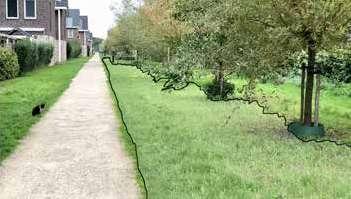


How does the app work?
1. We take a photo of the area where the bulbs are supposed to be planted. You can also take a photo yourself and send it to us. We place the photo in the designer app.
2. The area to be planted is defined.
3. Select a bulb mixture or individual varieties. There are many different varieties and mixtures to choose from. It is also possible to choose the density of bulbs per square metre..
4. Now you can see the result of what you have selected and what it will look like in reality.
With this app it will be easier to get an impression of the many possibilities with flower bulbs. Do you have an area that you are considering to enhance by planting bulbs? Contact your JUB specialist and discuss the options.





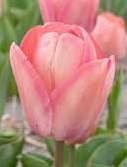











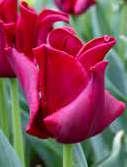

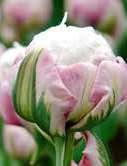






















Mixture Gouda
MIXTURES & EYE-CATCHERS
Mixture Woerden
Eye-catcher Silk (Keukenhof 2022)






Eye-catcher Foxtrot Party
Eye-catcher Festival of Colours
Eye-catcher Yellow and Purple make you Smile
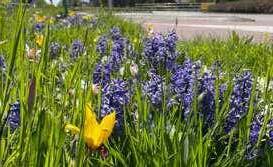

Eye-catcher Wining and Dining
Eye-catcher Bold Colours


Biodiversity is a term we use to denote the richness of nature. It is about the great diversity of animals, plants, habitats and genes.
Biodiversity, through its interaction with environmental factors, creates ecosystems in which organisms, such as humans, can live.
The habitats of bees and butterflies have become smaller and smaller and have also become further and further apart. Flowery roadsides, gardens and public green spaces can form an important link between their habitats.
The Dutch Beekeepers Association (NBV) and Buglife are committed to improving the living conditions of butterflies and bees. Together with the NBV, we have developed special mixtures that are both bee and butterfly friendly.


The bulbs which we use in our bee- and butterfly mixtures all belong in the top 10:

• Nectaroscordum siculum
• Allium
• Crocus (botanical and large flowering)
• Chionodoxa luciliae and sardensis
Scilla siberica
• Muscari armeniacum and aucheri varieties
• Galanthus nivalis
• English Bluebells
• Eranthis
• Botanical tulips
• Anemone blanda and nemorosa
• Ornithogalum umbellatum
• Leucojum aestivum
Gardens are vital habitats for bees and other pollinators. Create a haven for these essential insects by including some ‘bee and butterfly bulbs’ in your planting.

There’s so much that can be done in a garden or public green space to help. More flowers and wild spaces in urban areas are not only good for bees, but also for people – with a proven positive effect on people’s mental and physical health.


There are lots of ways you can create bee-friendly habitats in a garden or public green space.

Spring flowering bulbs, such as crocus and allium, offer nectar to bumblebees early in the season and are easy to grow. Herbs like lavender, thyme and rosemary are also low-maintenance plants that are loved by bees as well as butterflies.
Spring-flowering bulbs should be planted in September and October, as the soil is still warm and the bulbs can develop roots and become established before becoming dormant in winter. Tulip bulbs prefer being planted in November to prevent the fungal disease tulip fire. However, in general, you can usually plant spring bulbs as late as December without any problems. You can plant them directly into borders and pots. They generally need sun or partial shade and free-draining soil, so if the soil is very heavy, incorporate some horticultural grit when planting.
Biodiversity is increasingly important in the urban environment. In addition, much attention is paid to ecological management and development of wildflower vegetation. The Vibrant Verge concept has been developed to increase biodiversity and guarantee a long flowering period.




Within this concept, the strengths of annual, biennial and perennial (indigenous) seed mixtures are combined with a tailor-made bulb mixture. This ensures vegetation with a long flowering time, increased biodiversity, extensive, ecological maintenance and the seasonal experience gets enhanced.
Our sales team is happy to tell you more about the concept. The Vibrant Verge is a partnership of JUB Holland and Pictorial Meadows. For more information: www.thevibrantverge.co.uk
 Vibrant Verge at Floriade, phase 3, May - June
Vibrant Verge at Floriade, phase 4, July - end of Summer
Vibrant Verge at Floriade, phase 2, April
Vibrant Verge at Floriade, phase 3, May - June
Vibrant Verge at Floriade, phase 4, July - end of Summer
Vibrant Verge at Floriade, phase 2, April
The Vibrant Verge brings colour and biodiversity to both the urban environment and the rural areas. The combination of bulbs with wildflowers gives colour to public greenery for a long period of time. In addition, biodiversity is increased by the many different types of bulbs and wildflowers that are used.
The Vibrant Verge can be created almost everywhere, but the same types of bulbs and wildflowers are not used everywhere. This strongly depends on existing vegetation, soil, sun/shade and the wishes of the client.




 Dieren / Rheden - Vibrant Verge, phase 4, July - end of Summer
Dieren / Rheden - Vibrant Verge, phase 2, April -May
Dieren / Rheden - Vibrant Verge, phase 4, July - end of Summer
Dieren / Rheden - Vibrant Verge, phase 2, April -May

At some locations one will decide to use a very colourful bulb mixture, for example at prime locations in built-up areas or on an access road.
Local residents want more colour in their street or neighbourhood and the mixture is adjusted accordingly. More bulbs per meter are often used here and varieties that show a lot of colour but also come back well for many years.



 City of Brunssum - Vibrant Verge, phase 1: March
City of Brunssum - Vibrant Verge, phase 3, May - June
City of Brunssum - Vibrant Verge, phase 2: April
City of Brunssum - Vibrant Verge, phase 1: March
City of Brunssum - Vibrant Verge, phase 3, May - June
City of Brunssum - Vibrant Verge, phase 2: April

Hoek Landscape company built a Vibrant Verge in Leiden in the Netherlands in autumn 2021. Flower bulbs and herbs have been used here to enhance biodiversity and at the same time enhance the seasonal experience.

The special thing about this Vibrant Verge is that only organic flower bulbs have been used. These flower bulbs are 100% organically grown and therefore have the SKAL quality mark. 100% organically grown means that no chemical plant protection products and fertilisers are used when growing the flower bulbs.


Increase biodiversity. Bring colour and nature close with this beautiful mixture of bulbs and wild flowers.


Easy to maintain and flowers for up to 8 months.
Give this wellfilled bag as a gift or use it as a residents’ initiative.
City of Leiden - Vibrant Verge, phase 3, May City of Leiden - Vibrant Verge, phase 2, AprilUrbanisation and climate change demand new solutions for the quality of life in cities. Public green spaces have a positive effect on biodiversity, climate, well-being and air quality. This ensures that cities become better places to live and work.

The platform ‘Green Cities for a Sustainable Europe’ offers knowledge based on scientific research, innovative ideas and technical background, to promote greening of public spaces. This is subdivided into the themes of health, climate, economy, biodiversity and social cohesion. JUB is a member of Green Cities Europe. For more information: www.greencities.eu.



After Beringen in Belgium (2020) and Nantes in France (2021), Alkmaar and Stadswerk 072 won the 2022 Green Cities Europe Award with its inspiring programme ‘Greening & Biodiversity’.
The winner was announced during the ‘Victoires du paysage’ on December 8, 2022 in Paris.
‘Green Cities for a Sustainable Europe’ is an initiative of the ENA (European Nurserystock Association) and tree nursery organisations from Belgium, Bulgaria, Denmark, Germany, France, Greece, Hungary, Ireland, Italy, Poland, Portugal, Sweden and the Netherlands.
Appealing and inspiring projects are shown on the Green Cities Europe website as ‘Best Practices’. These projects are good examples of how urban areas can be greened, with the positive effects on health, climate, economy, biodiversity and social cohesion clearly visible.
Vibrant Verge, Alkmaar Tulipfestival Amsterdam Tulipfestival Amsterdam

Lush roof gardens are adorning more and more roofs. Beautiful borders of perennials combined with waving ornamental grasses. Together with the supporting structure of trees, hedges and shrubs, they form a beautiful unit.


Strategic eye-catchers are flower bulbs on the roof. Paths, lawns and terraces complete the picture. A green surprise that makes one happy! Due to the double use of land, the roof can be optimally used as a second ground level. A garden roof is ideally suited for living, working, sports, playing and relaxing.

Many herbaceous borders are virtually colourless in early spring when no bulbs have been planted.


To enjoy these borders for an extra long time, bulbs can be planted that flower in March, April and May. In doing so, it is important to take into account what can already be seen at that time of any early-blooming or earlyleaving perennials. In addition, there are also many annual spring bloomers that can be used.

Tulipa and Euphorbia


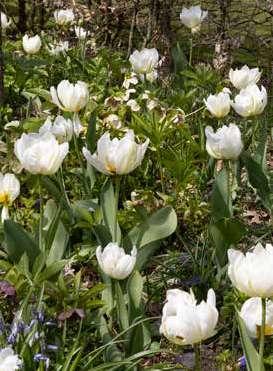
Tulipa and ferns
Allium and Thalictrum


You have beautifully blooming bulb flowers in your borders that you would like to pick and put in a vase. But… that will ruin the look of your borders. It is therefore better to create a separate cut flower/bulb picking garden. Then your cut flowers are actually a crop that is specially grown for picking.


Whether it is 10m2 or 100m2, it does require some attention to start with. A lot of information can be found on the internet. When it comes to flower bulbs, it is important to make choices. Wich colours, types and flowering time do you have in mind. For a picking garden that is as successful as possible, the right varieties must be chosen. Not every daffodil or tulip is also a good cut flower. We are happy to advise you. This way you can pick the first beautiful bulb flowers from your own picking garden next spring.



The choice of which species to use naturally depends on various factors. Your available space and your personal wishes: height, colour, double, fringed, fragrance, early or late flowering.


JUB Holland supplies hundreds of varieties of spring-flowering flower bulbs for gardens and parks. We highlight the 25 very best in this brochure: very strong species, most of them reliably recurring or naturalising, which give every garden an enormous boost!




All varieties are briefly described and we also give tips for application, soil type, location in the garden and combination options. For each variety also symbols indicating flowering time, flowering height and number of bulbs/m2.


Flower bulbs come in all shapes and sizes: from very exuberant and brightly coloured to subtle white and porcelain blue. Many flower bulbs, such as alliums, camassias and tulips, fit well in a sunny flower border, where they bloom before the summer-blooming perennials.





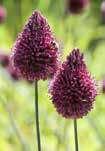

Flower bulbs are a great addition, especially in prairie/ornamental grass borders, which reach their peak in late summer. Many small bulbous plants are woodland plants, which perform well in shady places. The same small varieties often also fit in a sun border: precisely because they bloom so early, they make that border fascinating all year round. Once they have finished flowering, they quickly disappear underground again to reappear in greater numbers the following year. Whether it is a minimalist garden, a natural, modern or classic garden: flower bulbs suit every garden style, as long as you know how to use and combine them: with each other, but also with other plants!
Onze TOP 25 bestewww.jubholland.nlbollen







A prairie garden is a low-maintenance planting system that creates a natural balance between plants. The combination of strong perennials and ornamental grasses gives a completely different picture in colour and structure five to six times a year.
The image is attractive all year round. Because many prairie plants start late, bulbous plants are used for colour in the spring. Suitable prairie garden varieties are allium, camassia, leucojum, ornithogalum, iris, botanical tulips and daffodils.

Prairie mix white - for 5 m2



A bulb mixture of mainly white flowering varieties. Specific for a prairie garden with white crocuses, tulips turkestanica and ‘Spring Green’, daffodils ‘Thalia’ and ‘Stainless’, Hyacinthoides white, Leucojum ‘Gravetye Giant’, white allium and white camassia.









Prairie mix pink - for 5 m2
A bulb mixture of mainly pink-flowering varieties. Specific for a prairie garden with pink chionodoxa, tulips saxatilis and ‘Greenland’, daffodils ‘Thalia’ and ‘Pink Charm’, Hyacinthoides pink, Leucojum ‘Gravetye Giant’, Allium ‘Purple Rain’ and blue camassia.



A whole new form of specially designed wet locations are so-called wadis. A wadi actually works just like a floodplain or a river bed. It is a designated place that is occasionally completely flooded. At this location, the water can slowly sink in and is then slowly transported away to the ground and surface water. In this way it protects the sewage system.
A wadi system is designed to collect a certain volume of water. The wadi is usually calculated for a maximum water depth of around 30 to 40 cm and is then under water for a short period, usually no more than 24 hours. Outside these inundation periods, the wadi is often dry for a long time.
A rain garden is a sunken planting area with a flat bottom, planted with a variety of plants and shrubs. It is intended to temporarily collect water after a heavy rain shower and let it sink slowly. The plants serve to retain the water, to allow it to infiltrate the soil better and to allow it to evaporate. Like a wadi, a rain garden is dry most of the time. Below are the main flower bulb types and cultivars for wadis, rain gardens and other humid locations:
• Camassia cusickii, leichtlinii & quamash

• Nectaroscordum siculum

• Leucojum aestivum ‘Gravetye Giant’

• Fritillaria meleagris
• Narcissus jonquilla hybrids
• Galanthus nivalis
• Muscari azureum & botryoides





Colchicum autumnale looks a bit like a giant crocus. It blooms in Autumn (hence its name) without foliage. The leaves appear in Spring, but die before the plant comes into bloom. Plant the bulbs of colchicums in August, preferably in slightly damp and nutritious soil. The location can be sunny. The bulbs are planted 10-20 cm deep. They are best planted together, in groups of five to ten at a distance of 15-20 cm apart. The longer they are established, the more abundantly they bloom. They are completely hardy.
Autumn flowering crocuses (Crocus sativus / saffron crocus) are a lot smaller than colchicums but flower just as richly and are just as beautiful. Suitable for naturalising in sunny and warm places. Crocus sativus has a strong preference for well-drained clay-limy soil with a high organic content.
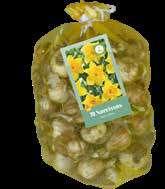
The oak processionary moth continues to spread and is now well established in most of Greater London and in some surrounding counties and government studies show the pest spreading on an annual basis. In many places the fire hairs of the caterpillars (larvae) of OPM are a hazard to human and animal health.
Based on the results of our research, we now have a special mixture that attracts the natural enemies of the oak processionary moth, such as parasitic flies, parasitic wasps, beetles, green lacewings etc. This mixture is not only available for public green areas but also as consumer pack for planting around trees or to hand out as community planting project. More information about oak processionary moth controle? www.jubholland.nl


There are many insects which fight the oak processionary caterpillars, such as parasitic flies, parasitic wasps, beetles, green lacewings etc. A large proportion of these insects depends on nectar and pollen during their lifetime as adult insects.
An example is the common green lacewing (Chrysoperla carnea). The larvae are active predators and feed on aphids, young caterpillars and other small insects. They can also be used in the biological control of insect pests on crops. In addition, earlier parasitic wasps are also active, which depend on pollen and nectar.
The trick is to lure these natural enemies of the OPM to the desired locations early in Spring by planting flower bulbs. Yellow flowers attract a lot of insects, that’s why it is important to plant daffodils. Blue grape hyacinths (Muscari) are nectar rich and are frequently visited by insects. Our special OPM mixture combines the most suitable varieties for the best possible result.
By planting the right bulbs we create a bridge to the later flowering vegetation that is sown to attract natural enemies. This combination creates the ideal conditions for the natural enemies. Besides, it is also good for bees and other pollinating insects that are already struggling in recent years and, moreover, it’s an attractive and nature friendly option in the public eye.
There is always room for flower bulbs.
Around trees, next to a bus stop or on a roundabout. Flower bulbs are suitable for locations with sun or more shade in dry soil as well as in more humid conditions.
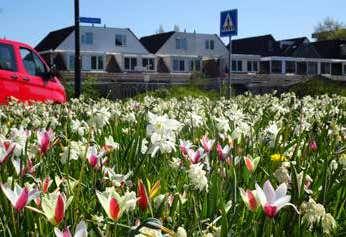



Even in case the designated area is just one square meter, by using the right bulbs you can make the difference from very boring to a beautiful Spring explosion.

 Narcissi on a roundabout
Tulip mix on a roundabout
Narcissi on a roundabout
Tulip mix on a roundabout
Tulips and/or other spring-flowering bulbs embellish streets and squares in villages and towns. Bulbs give colour to early spring. Colourful rows of tubs and bowls with tulips, for example, brighten up residential and shopping streets, squares and shopping centers.




In addition to bulb plantings introduced by municipalities, there is regularly a citizens’ initiative by residents who want to beautify their street or immediate environment with colour in the spring. Example: Amsterdam Tulip Festival: www.tulpfestival.nl. Something for your city or village?


Naturalising bulbs, many of them being native varieties, can be found in this section. Our naturalising bulbs are all nursery grown and not collected from the wild! In general, they require minimal maintenance and many of them will grow in (semi-) shady locations.



The most popular naturalising bulbs in woodlands are undoubtedly snowdrops, wood anemones and English bluebells. Wood anemone (Anemone nemorosa) is native to almost the whole of Britain on various types of soils and habitats. The rhizomes will spread steadily if conditions are right, around or under trees.

Very spectacular are the bluebell woods where millions of violet-blue flowers spread their sweet scent, but bluebells can also be found in more open spaces. Galanthus (snowdrops) are usually the first flowers to appear in winter. The discussion whether they need to be planted as dry bulbs or ‘in the green’ will probably never end. At JUB we always advise to plant snowdrops in late summer or early Autumn as fresh dry bulbs for the best result.
 Anemone nemorosa
Anemone nemorosa

Some naturalising bulbs come from afar and have a South-, Eastern- or Central-European origin, think for example of the beautiful Tulipa turkestanica or the Ornithogalum nutans, but there are also quite a few native varieties like English bluebells and pseudonarcissus. Of course, JUB Holland will never obtain any bulbs which are collected from the wild. All bulbs offered in this catalogue are nursery grown!
When you want to get started with naturalising bulbs, JUB Holland offers in this catalogue a very wide selection of true species from reliable, often smallscale nurseries. For those who find it difficult to choose varieties which combine well, there are beautiful readyto-use mixtures available.

Those mixtures provide colour for months and the JUB specialists are happy to advise whether your preferred mixture is also suitable for the particular project. This depends on factors such as mowing, pruning, light and type of soil. More and more clients are asking for bespoke mixtures, because they want something special: a mixture or planting plan that is completely geared to the location with a theme that matches the specific project.
On the next 6 pages an overview of the many naturalising bulbs that we can supply. If you have questions about specific types, you can always contact one of the specialists.


Galanthus likes moist soil under deciduous trees and shrubs, but also thrives in a warm, sunny location.

Chionodoxa grows in all welldrained soils in sunny or semishaded places. It is therefore very suitable for use under deciduous trees, shrubs and hedges.


Anemone nemorosa feels at home in a shady and humid place. This ground covering variety must be planted immediately upon arrival.

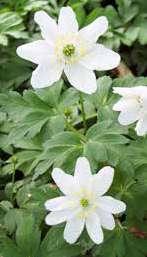 GLORY OF THE SNOW - CHIONODOXA LUCILIAE - P. 120
SINGLE SNOWDROPS - GALANTHUS NIVALIS - P. 122
WOOD ANEMONE - ANEMONE NEMOROSA - P. 119
GLORY OF THE SNOW - CHIONODOXA LUCILIAE - P. 120
SINGLE SNOWDROPS - GALANTHUS NIVALIS - P. 122
WOOD ANEMONE - ANEMONE NEMOROSA - P. 119
HOLLOW ROOT - CORYDALIS CAVA - P. 127
Corydalis cava prefers full shade between trees or shrubs, in a humusrich soil containing moisture. Corydalis cava will produce full ground cover under the right conditions.


Tulipa sylvestris likes a moist, nutrient-rich location in full sun. It grows well in grass and in light shade.


SNAKE’S HEAD FRITILLARY - FRITILLARIA MELEAGRIS -

Fritillaria meleagris or ‘snake’s head fritillary’ needs a moist, moderately nutrient-rich soil. They also feel most comfortable in light shade.
 WOODLAND TULIP - TULIPA SYLVESTRIS - P. 108
P. 121
WOODLAND TULIP - TULIPA SYLVESTRIS - P. 108
P. 121

This crocus prefers a sunny spot or under deciduous shrubs. The crocus feels at home in almost all soil types as long as they are not too wet for too long.

This is a beautiful late flowering, narcissus. Single, slightly scented flowers. Likes humus-rich soil and a sunny to semi-shaded location.

English Bluebells prefer a light shade in a moderately dry to moderately moist soil.


 ENGLISH BLUEBELL - HYACINTHOIDES NON-SCRIPTA - P. 122
CROCUS TOMMASINIANUS - P. 115
POET’S NARCISSUS - NARCISSUS POETICUS (VAR. RECURVUS) - P. 111
ENGLISH BLUEBELL - HYACINTHOIDES NON-SCRIPTA - P. 122
CROCUS TOMMASINIANUS - P. 115
POET’S NARCISSUS - NARCISSUS POETICUS (VAR. RECURVUS) - P. 111
TOOTH VIOLET -



Erythronium pagoda has beautiful flowers and attractive light mottled leaves. This variety thrives in a sandy humusrich soil in shade to partial shade.

These scillas attract many bees. Plant them in a sunny to semi-shaded place in well-drained soil. Scillas propagate quickly through bulblets as well as seeds.
The name ‘Summer Snowflake’ is misleading, it flowers already in April / May. They grow well in a moist soil and are therefore suitable for use in clay or loamy soil.

-
 SIBERIAN SQUILL - SCILLA SIBERICA - P. 126
DOG’S
ERYTHRONIUM PAGODA - P. 127
SUMMER SNOWFLAKE
LEUCOJUM AESTIVUM - P. 124
SIBERIAN SQUILL - SCILLA SIBERICA - P. 126
DOG’S
ERYTHRONIUM PAGODA - P. 127
SUMMER SNOWFLAKE
LEUCOJUM AESTIVUM - P. 124
‘Wild Garlic’ prefers a sunny or semi-shady spot in moist, calcareous soil. This allium produces a strong garlic-like smell during the flowering. Plant bulbs immediately upon arrival.


Colchicums mainly grow in woodland and in wet meadows. They love a sunny to partial shaded place. They can also be used for indoor flowering, without soil or water.


Ornithogalum nutans has broad leaves and prefers a sunny to semishaded location. The ‘Drooping Star-of-Bethlehem’ prefers a moist, limy soil.

 DROOPING STAR OF BETHLEHEM - ORNITHOGALUM NUTANS - P. 126
WILD GARLIC - ALLIUM URSINUM - P. 119
NAKED LADY - COLCHICUM AUTUMNALE - P. 116
DROOPING STAR OF BETHLEHEM - ORNITHOGALUM NUTANS - P. 126
WILD GARLIC - ALLIUM URSINUM - P. 119
NAKED LADY - COLCHICUM AUTUMNALE - P. 116
Arum italicum performs best in damp soil in shade or semi-shade and can easily be combined with ferns, ivy and hostas. The redorange berries appear in August.


‘Star-of-Bethlehem’ likes a sunny to slightly shaded place on moderately moist and moderately nutrient-rich soil.


The winter aconite is one of the earliest flowering bulbs. Eranthis celicica does well under deciduous trees and shrubs.

 STAR OF BETHLEHEM - ORNITHOGALUM UMBELLATUM - P. 126
ARUM ITALICUM - P. 127
WINTER ACONITE - ERANTHIS CILICICA - P. 127
STAR OF BETHLEHEM - ORNITHOGALUM UMBELLATUM - P. 126
ARUM ITALICUM - P. 127
WINTER ACONITE - ERANTHIS CILICICA - P. 127

Chionodoxa grows in all welldrained soils in sunny or semishaded places. It is therefore very suitable for use under deciduous trees, shrubs and hedges.


The real spring bell. It flowers in April/ May and can be used well in moist soil and is therefore excellent for use in clay or loamy soil.

The yellow wood anemone feels at home in a shady and moist place. This ground cover should be planted immediately upon receipt.

 YELLOW WOOD ANEMONE - ANEMONE RANUNCULOIDES - P. 119
TURKISH GLORY OF THE SNOW - CHIONODOXA SARDENSIS - P. 120
SPRING SNOWFLAKE - LEUCOJUM VERNUM - P. 124
YELLOW WOOD ANEMONE - ANEMONE RANUNCULOIDES - P. 119
TURKISH GLORY OF THE SNOW - CHIONODOXA SARDENSIS - P. 120
SPRING SNOWFLAKE - LEUCOJUM VERNUM - P. 124
The eastern anemone feels at home in a semishaded place. For best results, this ground cover should be soaked in water for a few hours before planting.


Very early flowering scilla. Plant them in a sunny to semi-shaded position in welldrained soil. The scilla multiplies rapidly by means of the bulb and by seed.



These scillas attract many bees. Plant them in a sunny to semishaded place in well-drained soil. Scillas propagate quickly through bulblets as well as seeds.
 SCILLA MISCHTSCHENKOANA - P. 126
EASTERN ANEMONE - ANEMONE BLANDA - P. 119
ALPINE SQUILL - SCILLA BIFOLIA - P. 126
SCILLA MISCHTSCHENKOANA - P. 126
EASTERN ANEMONE - ANEMONE BLANDA - P. 119
ALPINE SQUILL - SCILLA BIFOLIA - P. 126

Are you looking for easy, manageable mixtures which will come back year upon year? Simply look in the section ‘Verges and grass areas’. Here you will also find the bee and butterfly mixtures.
Some of our mixtures just flower in the early Spring, whilst others start early and flower until the end of June! Depending on your mowing regime, you can choose the most suitable mixtures.

MIXTURE VIANEN
A cheerful mix of various tulips, botanical narcissi and muscari.

2 7 >
MIXTURE WOERDEN
MIXTURE GOUDA
A fragrant mixture of white and blue hyacinths, chionodoxa and various botanical tulips.

15-30 cm
2 7 >
A sunny mixture with first various crocuses, scillas and eranthis, followed by various botanical daffodils, tulips and fritillaria meleagris.
2 7 >
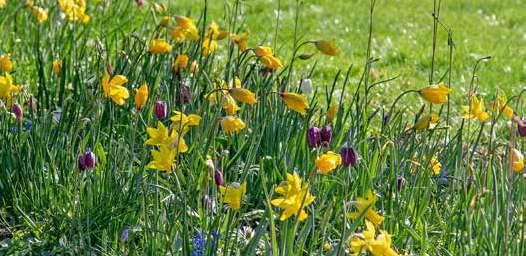
A nice and very colourful mixture of specie and large flowering Dutch crocuses. Combining these two types results in an extra long flowering time.

A beautiful mixture of many miscellaneous naturalising bulbs.


A perfect naturalising mixture for woodland areas.
Flowering period 1, February - April
Flowering period 2, April - May
MIXTURE KOPENHAGEN
MIXTURE NIJMEGEN (IN 2 FLOWERING PERIODS)
Botanical narcissi Golden Echo combined with botanical tulips and muscari.

A truly special combination of Autumnflowering crocuses and Springflowering crocuses, which surprises you twice per year.


Flowering period 1, February - March
Flowering period 2, October - November
MIXTURE HAARLEM
MIXTURE BRUGGE
MIXTURE EIKENHORST
Large flowering Dutch crocuses in shades of blue and white are very suitable for early perennial flowering in lawns and other grass areas.


2-3 10-15 cm
200/m 2 5 >
A fragrant mixture with hyacinths, anemone, muscari, chionodoxa and various botanical tulips and daffodils.
3-4 10-25 cm
250/m 2 6 >
This mixture of blues and lilacs, flowers early in Spring.
It is a combination of various miscellaneous bulbs and specie tulips.

2-4 10-25 cm
300/m 2 6 >
VERGES AND GRASS AREASMIXTURE NOORDWIJK
An early flowering mixture of large flowering Dutch crocuses in yellow, blue, white and purple.



Flowering period 1, February - March
A bee attracting mixture in two phases. In February-March the rich flowering Crocus Ruby Giant, followed in March-April by a blue-red mixture of specie tulips and muscaries.
Flowering period 2, March - April
Based on the results of our research, we have developed a special bulb mixture that attracts the natural enemies of the oak processionary moth, such as parasitic flies, parasitic wasps, beetles, green lacewings etc.
A natural mixture of early crocuses, followed by various specie tulips, botanical narcissi, muscari and snakes head fritillaries.



Flowering period 1, February - March
Flowering period 2, March - May
MIXTURE AMSTELVEEN
This combination of chionodoxa (glory of the snow) and botanical narcissi ensures years of flowering.
Beautiful mixture with, among other things, early flowering botanical tulips, botanical daffodils and muscari.


MIXTURE LISSE
This stunning mixture of specie crocuses guarantees an abundant colour effect in very early Spring.

MIXTURE HUIZEN
MIXTURE TYNAARLO (IN 2 FLOWERING PERIODS)
A very natural mixture of good naturalisers. Corydalis, scillas and chionodoxa form a fascinating colour combination together.
A mixture with a wide variety of bulb types for a long flowering period. Crocuses, chionodoxas, botanical narcissi, puschkinia and specie tulips.



Flowering period 1, February - March
Flowering period 2, March - April
A nice mixture of anemones, botanical narcissi, botanical tulips, muscari and chionodoxa.

This mixture is a surprising combination of early mixed crocuses followed by botanical narcissi, muscari and bright red tulips.


Flowering period 1, February - March
Flowering period 2, March - May
This mixture of botanical narcissi offers a beautiful variation of colour, shape and flowering time.

It even includes some deliciously scented varieties.
2-4
A bee attracting mixture in two phases. In February-March a flood of yellow and soft lilac specie crocuses, followed in March-April by a colourful mixture of specie tulips, muscari and anemones.


Flowering period 1, February - March
Flowering period 2, March - April
Info:
Anemone blanda White Splendour is not available in the 2023/2024 season. These will be replaced in this mixture by Chionodoxa luciliae Alba.
MIXTURE BRUSSEL
MIXTURE LEERDAM (IN 2 FLOWERING PERIODS)
This very colourful mixture of various tulips and daffodils is ideal for main roads and large grass areas.



Varied mixture of early crocuses, followed by muscari, various specie tulips and white narcissi.
Flowering period 1, February - March
Flowering period 2, March - May

A beautiful mixture of yellow narcissi and daffodils with an extended flowering period. It includes early small narcissi and the taller daffodils will flower until the end of April.


2-4 30-50 cm
100/m 2 6 >
A mixture starting with abundantly flowering crocuses, botanical tulips and botanical narcissi, followed by alliums and camassias.
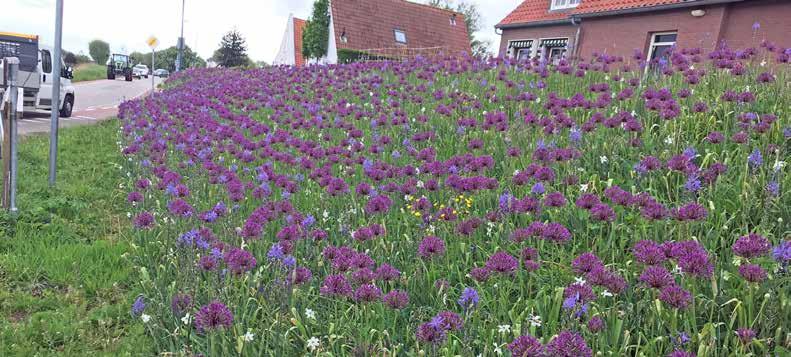
2-6 10-80 cm
Flowering period 1, February - April
200/m 2 7 >
Flowering period 2, May - June



This mixture was a great success at the main entrance of Floriade 2012 in Venlo in the Netherlands. From early Spring until summer you will enjoy the great diversity of flowers in this mixture.
Flowering period 1, February - March
Flowering period 2, March - April
Flowering period 3, May - June
A well-balanced mixture of many types of large flowering daffodils in different forms, colours and shapes.



A surprisingly simple mixture with two colour periods. A bright yellow start in March, followed by pure white in April-May.
Flowering period 1, March - April
Flowering period 2, April - May
A colourful mixture of botanical narcissi, with a contrasting addition of two tulip varieties.
This cheerful early flowering mixture is a wonderful combination of 3 types of flower bulbs: botanical daffodils, crocuses and early tulips.


This mixture in pure white is an elegant combination of white crocuses, white chionodoxas, white scillas, white narcissi and white tulips.

Cheerful flowering Spring mixture with various types of daffodils and striking red tulips.


Mixture Volendam is very suitable for road verges with rough vegetation, with its early and late yellow daffodils, followed by alliums and camassias as an extra surprise.
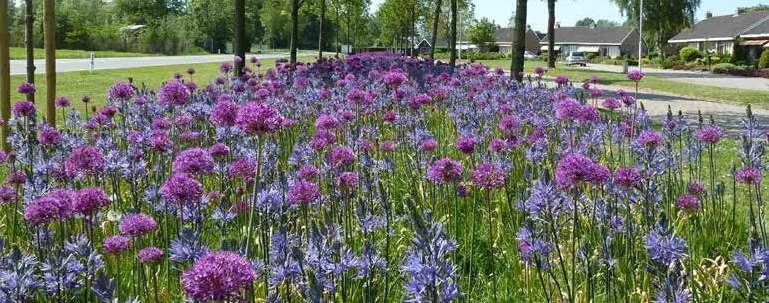
Flowering period 1, February - April
Flowering period 2, May - June
MIXTURE ARNHEM
Floral fireworks based on three months of yellow daffodils, contrasted by various red tulips.


Colourful mixture with various narcissi and tulips in March / April, followed in May / June by camassias and alliums.

Flowering period 1, March - April
Flowering period 2, May - June
Three different colours in one mixture. Yellow narcissi start off the show in March, followed by white narcissi and finishing with camassias in various shades of blue.



Flowering period 1, March - April
Flowering period 2, April - May
Flowering period 3, May - June
A late Spring flowering colour sensation for verges and grass areas. A mixture of various alliums, camassias and daffodils.
5-6 50-100 cm
80/m 2 7 >
This mixture is especially designed for road verges with rough vegetation. The flowering period starts with yellow daffodils,followed by fragrant narcissi in late-April. In May/June the alliums deliver a purple finish in the tall grass.
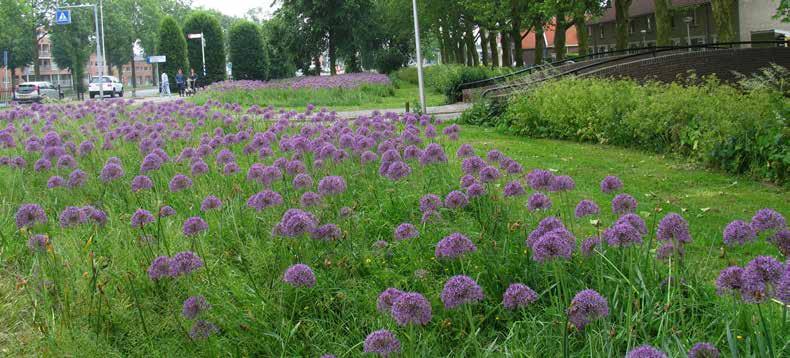


2-6 30-80 cm
Flowering period 1, February - April
100/m 2 7 >
Flowering period 2, May - June
Create a colour sensation in roadsides and grass areas with this intriguing mixture! Impressive blooms on start to flower in late-Spring. Flower heads of light and deep purple, along with creamy white, last for weeks, followed by the decorative seed heads.



Flowering period 1, May - June
Butterflies are an important link in the food chain and furthermore pollinate flowers when they visit them to suck up the nectar. Butterflies have high standards for their habitat and will only appear in places where the conditions are right. By planting this special mixture, butterflies get attracted in late Spring.
Flowering period 2, June - July


BULBS
Are you looking for a striking bulb mixture for a special location, to celebrate a specific event or to emphasise an important location? Visit this category ‘Eye-catchers’!

These mixtures are also very suitable for containers and roundabouts. We have selected them by colour, height and flowering time.
The special mixture SILK
Design: Carien van Boxtel
Flowering time: from early March till mid May



IMPERIAL FRIENDS
HAVE PLEASANT DREAMS

IRRESISTIBLE FRAGRANCE





PALETTE OF SPRING


FESTIVAL OF COLOURS







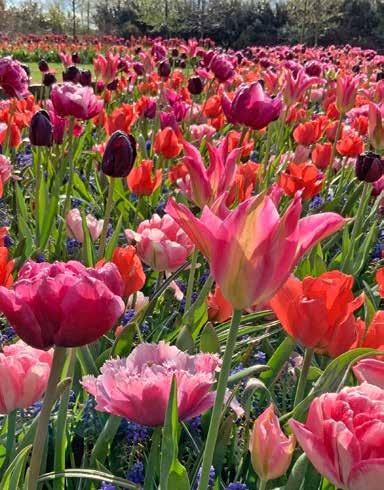
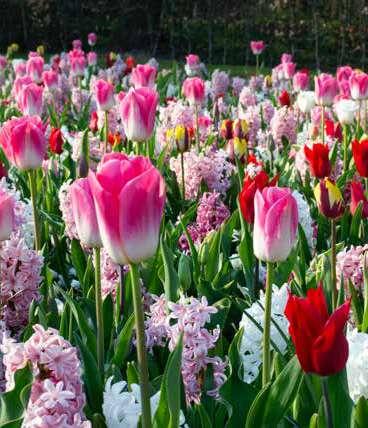
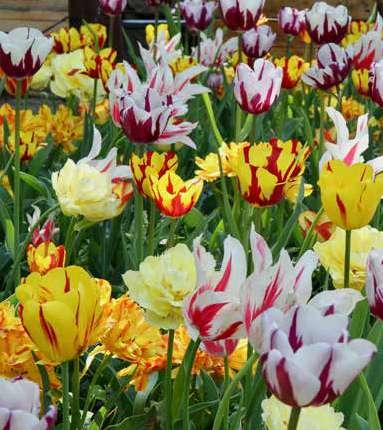

YELLOW FRESH AND A TOUCH OF PINK












The colourful and long-flowering mixtures that have been planted in the JUB Holland borders at Keukenhof since 2019 were designed by Carien van Boxtel, designer at JUB. These mixtures are not only beautiful but also very special. They start flowering around mid-March and continue to bloom until mid-May. These special mixtures can be ordered from us: ‘NUDE & WHITE’ (2019), ‘NUDE & BLACK’ (2019), ‘HOT & COLD’ (2020) ‘WILD GARDEN’ (2021) and ‘SILK’ (2022). Please note: these exclusive mixtures are limited available!
The JUB borders designed by Carien van Boxtel in 2019 were ‘Nude&Black’ and ‘Nude&White’: A very dramatic dark border next to a fresh white-green border, both with salmon and ‘nude’ coloured accents. The borders were made up of several layers, in which many species were planted.


Carien was inspired by colour temperatures and made a choice between ‘hot colours’: warm red, brown and orange and also ‘cool colours’: powdery mauve, lilac and lavender pink that have been used interchangeably. The exuberant flowering started in late March, early April with various types of tulips, Fritillaria raddeana, muscari, chionodoxa and, daffodils. Flowering continued with a festive explosion of colour in April with Fritillaria aurora, various daffodils, many tulip varieties and various smaller spring bloomers. The result was astonishing.



Carien’s design for ‘Wild Garden’ was an ode to William A. Robinson, (1838 - 1935) an Irish gardener who was at the origin of the concept of the ‘Cottage Garden’. He started planting mixed flower borders in a more casual way as a counterpart to the stiff Victorian ‘bedding’. He was a great advocate of the use of naturalising bulbs. This style made an important contribution to biodiversity, because commonly used species provide nectar and pollen to (early) bee and butterfly species.




A design based on the beautiful colours of an embroidered silk dress of Queen Maxima. Soft antique faded colours such as apricot, lilac, soft pink and white tones and regal purple, designed by Jan Taminiau. A wonderful mixture. Can now be ordered for the coming planting season.
Velvet is a soft and fine, shiny woven fabric, which is traditionally used for expensive clothing.
Patterns and colours
Carpets, woven in the most fantastic floral motif-based patterns and rich, saturated colours are the inspiration for the presentation of JUB Holland in Keukenhof 2023.
The choice was made for the colours burgundy red, black, purple, bronze, ocher, warm orange and brown, with as contrast warm yellow and cream.
The bulbs were planted mid-November 2022




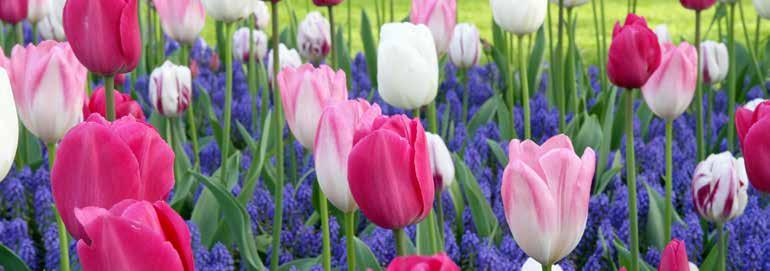




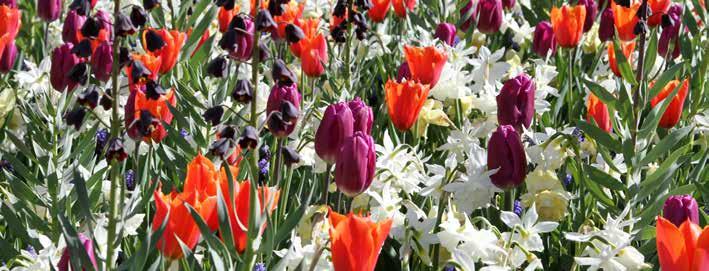


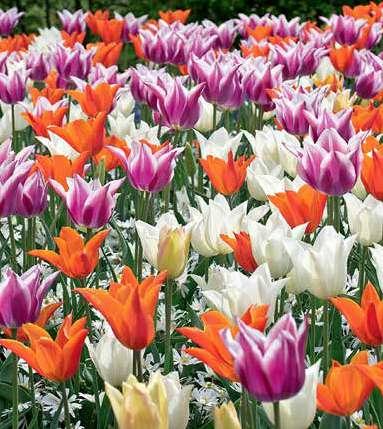











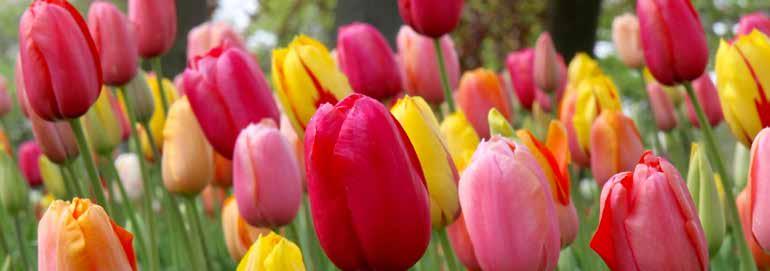

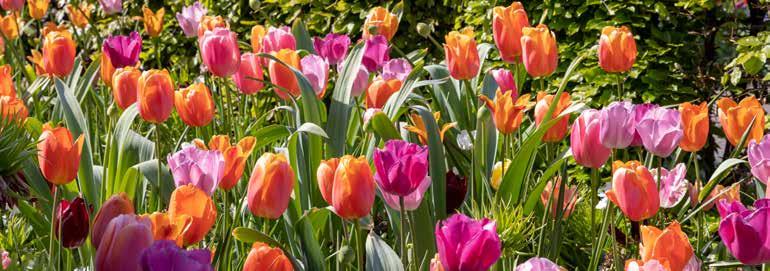


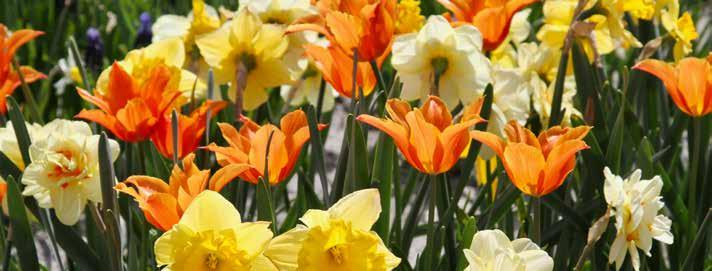
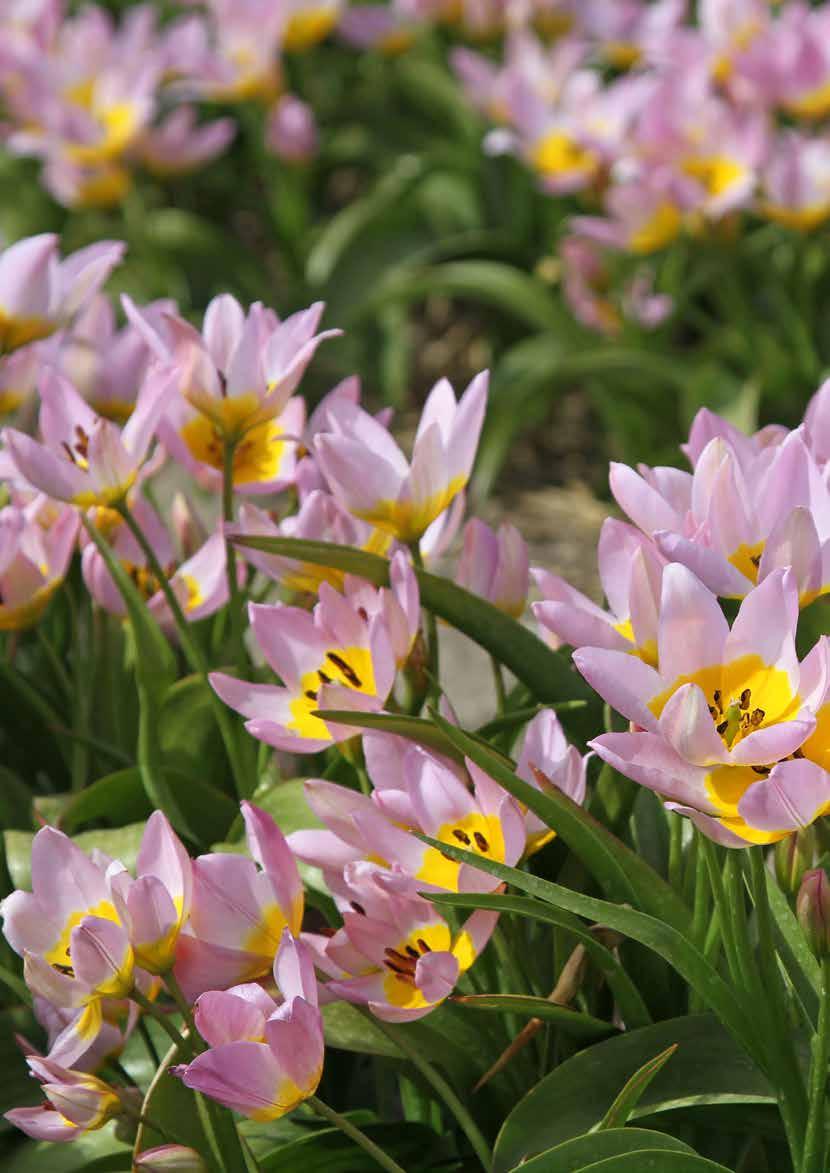
On the following pages you will find our extensive assortment of loose bulbs. The symbols show information such as flowering time, height and recommended number of bulbs per m2.

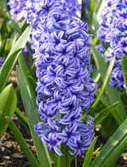


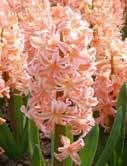









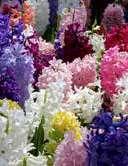




SINGLE EARLY TULIPS
DOUBLE HYACINTHS

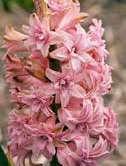


SINGLE EARLY TULIPS



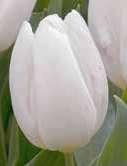







‘PRINCE’ VARI ETIES

DOUBLE EARLY TULIPS
DOUBLE LATE TULIPS 80/m. 2


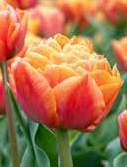








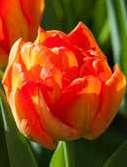





















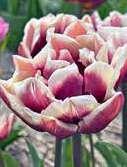

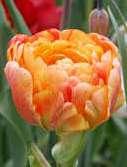






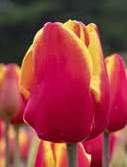






















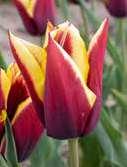



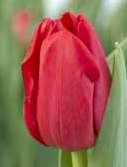



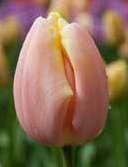
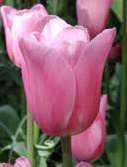
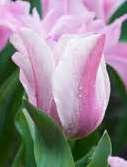

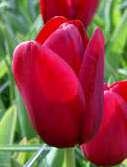

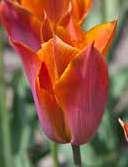


















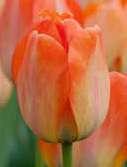









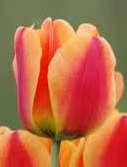
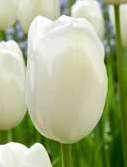











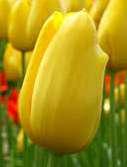









SINGLE LATE TULIPS - FRENCH -












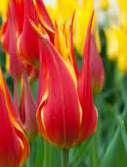

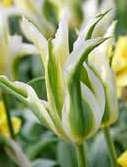







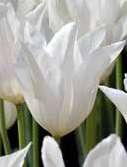






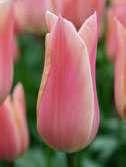





MULTI FLOW. TULIPS 80/m.










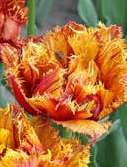

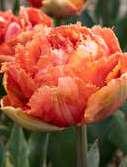


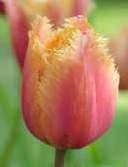

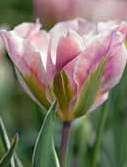


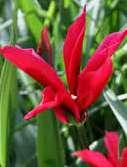














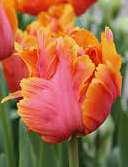










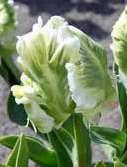



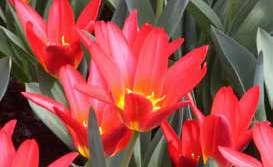








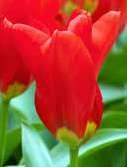





























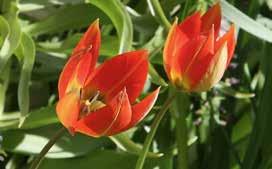





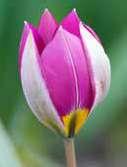
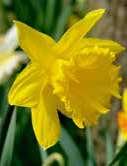

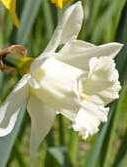



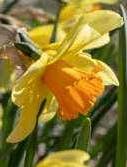






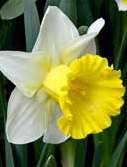









DOUBLE NARCISSI



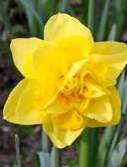




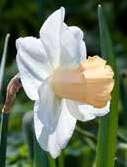








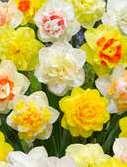


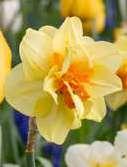







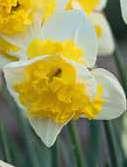








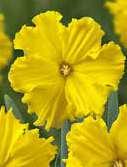


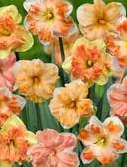

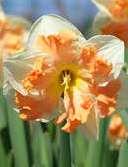



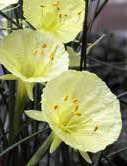






















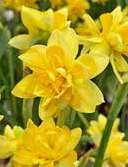
LARGE FLOWERING CROCUSES







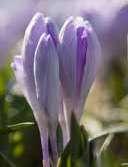


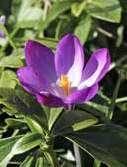


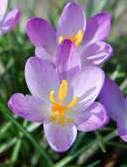















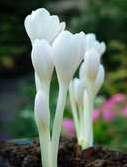


























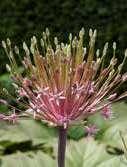


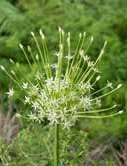



















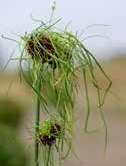




















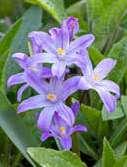


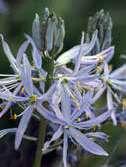













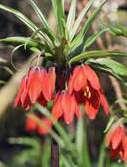








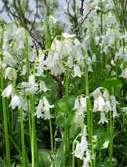




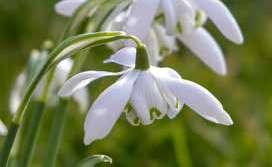


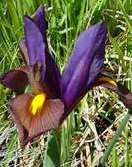











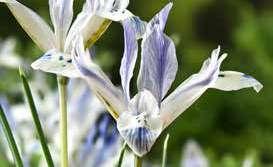

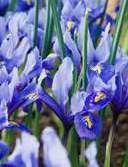






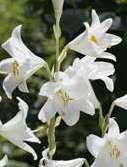




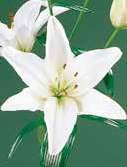











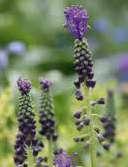








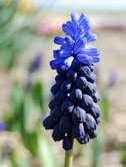





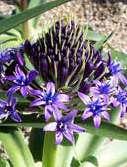




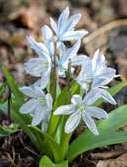




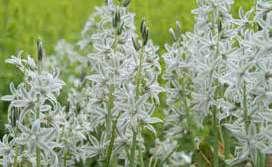








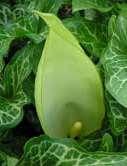














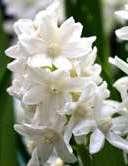



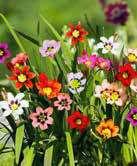





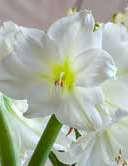










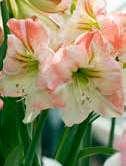
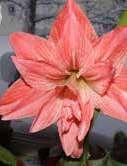

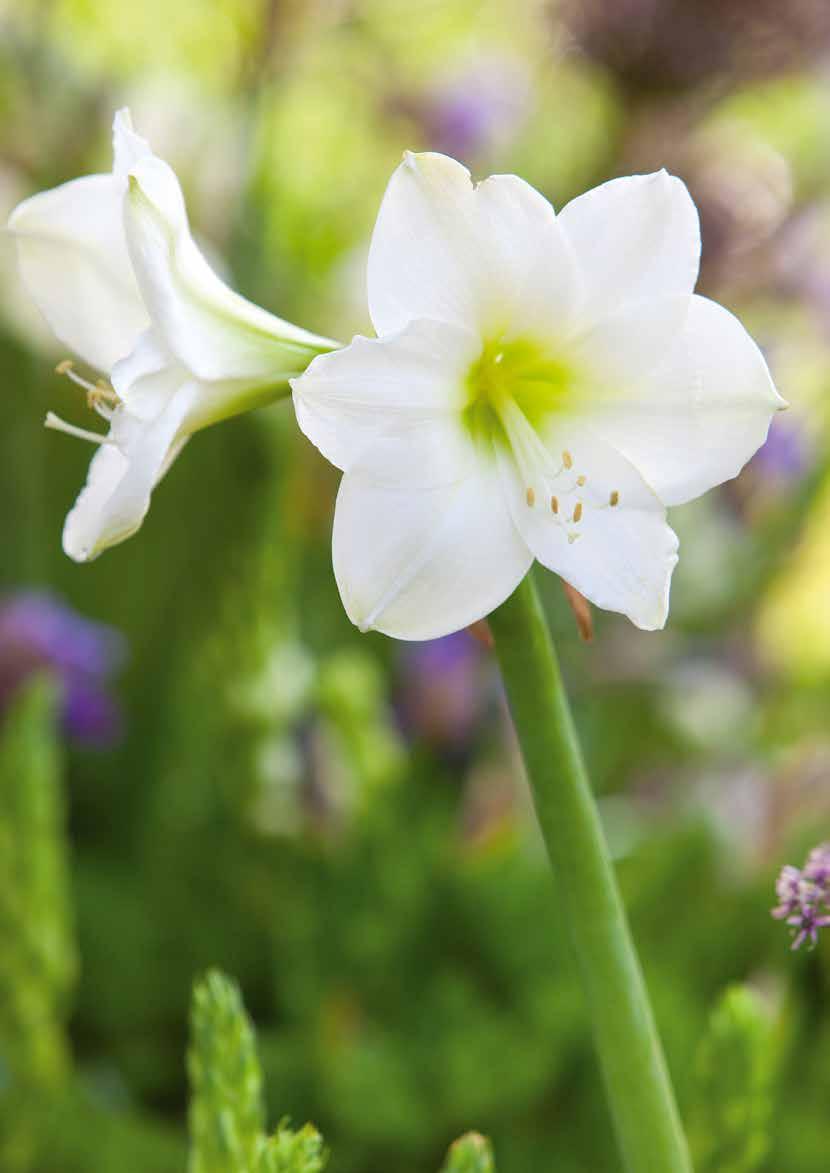


We obtain our organic bulbs from reliable organic growers, who do everything possible to grow their bulbs as organically and sustainably as possible. These varieties also deliver a great contribution to the wellfare of bees, butterflies and other insects (biodiversity).


















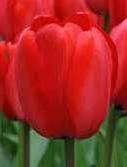










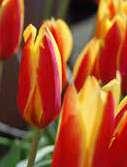


 Royal Virgin (triumph)
Royal Virgin (triumph)
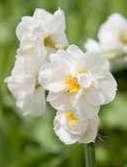
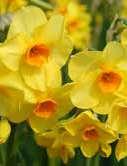






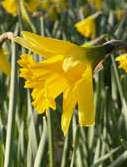
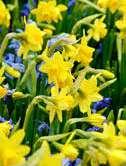
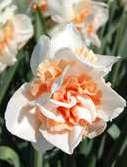


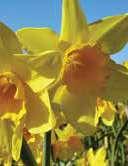







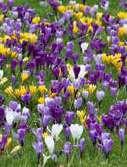










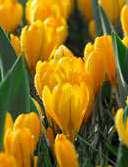













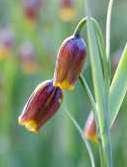









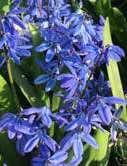











25 years ago, JUB Holland developed a planting machine that plants bulbs in existing lawns and roadsides, in a simple manner. In this chapter you can find information about mechanical planting as well as feeding and mowing policies.
You will also find a handy list which shows each variety with the recommended location, specific features, durability and an alphabetical index.



Our special planting machine is ideal for planting large quantities of bulbs in existing grass, along roadsides, in lawns, roundabouts etc. By planting the bulbs with our machine you will achieve a major reduction in labour costs.The machine is a combination of planter and (mini) tractor. A large container holds the bulbs, whilst at the bottom two belts deliver the bulbs to the ‘plant feet’. Two vertical rotating knives open the turf just before the plant feet. The feet ‘dive’ into the ground and open up the turf, at which point the belts release the bulbs which fall into the soil and are then covered. The machine also puts the turf back in position, followed by a roller.



On special request, we can use an emission-free tractor for the planting machine when planting flower bulbs by machine. A limited number of tractors that pull the planter have been converted into electric. In this way, JUB takes the next step towards sustainability. For questions about these emission-free tractors for your project, please contact one of the JUB specialists.
The planting machines Bulbs on the belt before planting Filling the machine with bulbs Rollers put turf back in position Bulbs are being plantedUnder the right circum-stances it is possible to plant approximately 10,000 daffodils or 25,000 crocuses/small bulbs per hour.



The speed of the planting may vary depending on factors like:
• soil type
• location
• bulb size
• weather circumstances
Especially for sloping areas we offer a machine that can plant on banks with a maximum angle of 30 to 35 degrees. This machine is provided with caterpillar tracks, and an additional plant foot so that a uniform effect can be achieved.

In order to plant closer to trees, we recently developed a side planter. This machine has a plant foot mounted on the side of the machine which enables us to plant between, or very close to, trees.
 Planting with a side planter
Embankment planter in action
Result on the bank in Spring
Result of planting with side planter
Planting with a side planter
Embankment planter in action
Result on the bank in Spring
Result of planting with side planter
To preserve your bulbs, it is very important to provide them with food. JUB has therefore further expanded the service. It is now also possible to carry out feeding in Autumn and Spring with our specially selected biological bulb fertiliser. This is the same fertiliser which we use for our own cultivation at our nursery.
In Autumn, the fertiliser is given simultaneously with the mechanical planting of bulbs in grass via a device installed on the planting machine.


An environmentally friendly organic food can be used in Spring. The organic component in this fertiliser is converted into humus by soil organisms.
When using naturalising bulbs in grass areas, a commonly accepted guideline is that mowing can be started an average of six to eight weeks after flowering.
This will allow the bulbs enough time to produce seeds and die back naturally. An exception to this rule is the allium, which can be mown directly after flowering. The foliage of most alliums has already died back before flowering.
 Mowing, on average 6-8 weeks after flowering
Spring fertilisation
Mowing, on average 6-8 weeks after flowering
Spring fertilisation
Every day, everyone at JUB does his or her utmost to keep the quality of the products high.

The products from our own nursery, the bulbs we purchase from fellow growers and the quality of the logistics processes from purchase to sale. Everything is expertly checked.



At JUB Holland attention to detail is very important to guarantee good quality:
• Storage of bulbs until packing and shipping
• Health of the bulbs
• True to name and size, delivery of the bulbs
• Packaging and transport of bulbs
• Packing of bulbs in netlon bags with colour labels incl. Plant Passport details.
 Netlon bag with colour label + Plant Passport
Bulbs available in crates or netlons
JUB quality ✓
Netlon bag with colour label + Plant Passport
Bulbs available in crates or netlons
JUB quality ✓
Allium - large flowering
Allium - small flowering
Amaryllis
Anemone coronaria
Anemone blanda
Anemone - other
Crocus - large flowering
Crocus - botanical
- large flowering
- small flowering
tuberosum
semishade shade humus calcareous moist naturalising
Narcissi - large flowering

Narcissi - botanical
Narcissi - indoor
O = Organic
JUB Holland landscape catalogue UK 2023/2024
Lay-out: Joop Hüner.
Photos: Joop Hüner, Tony Lindhout, Robbert Uittenbogaard, Corine Hogewoning, Nicole Colijn, iBulb, Floramedia, Tulpfestival: John Lewis Marshall (Bulbs in pots and Green Cities EU), Dakakkers Rotterdam and various growers.
Pieter Teeuwen
Konsumentmarknad och Landskapslök + 31 (0)6 2223 2750

pieter@jubholland.nl

Cees van der Lip
Export manager + 31 (0)252 204 108 (direct) cees@jubholland.nl
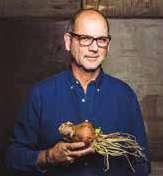
• Lökarna levereras fraktfritt till kund vid ett beställningsvärde av minst 15 000 SKR exkl. moms, netto, för var beställning som transporteras separat, till en adress i Sverige
• JUB förbehåller sig rätten att justera priserna i prislistan för Sv. kronan i förhållande till Euron, om växelkurserna ändras efter 1 augusti 2023
1. Jac. Uittenbogaard & Zonen B.V. and its affiliated companies are referred to as ‘JUB Holland’. JUB Holland is affiliated with Anthos, the Dutch sector organisation for companies that trade in flower bulbs and arboriculture products. Anthos has drawn up general conditions for the sale and supplying of flower bulbs.
2. The Anthos terms and conditions and these supplementary JUB Holland terms and conditions apply to all contacts, contracts and trading with JUB Holland, which are hereinafter referred to together as ‘the applicable terms and conditions’.
3. JUB Holland sends the applicable terms and conditions to its potential contractual parties upon the initial contact, so that they are able to take note of the applicable terms and conditions before a contract with JUB Holland is concluded. The applicable terms and conditions can also be found on the JUB Holland website.
4. JUB Holland explicitly rejects all general terms and conditions (for sale and purchase) from contractual parties, which means they do not apply to contacts, contracts and trading with JUB Holland, unless agreed otherwise in writing beforehand and signed by JUB Holland.
Agreement
5. An agreement including the applicable terms and conditions is concluded by means of a written confirmation by JUB Holland of an order or delivery, or by the unconditional and unamended acceptance by a contractual party of a proposal, offer or quotation made by JUB Holland and/or by the retention of products from JUB Holland.
6. Quotations and quotes made by or on behalf of JUB Holland are made without obligation and have a validity of 30 days, following which time quotations and quotes made by JUB Holland no longer apply and are invalid.
Supply and delivery
7. Products are supplied ex works JUB Holland in Noordwijkerhout.
8. If JUB Holland is unable to supply due to force majeure, for example due to disappointing harvest results, then JUB Holland reserves the right to cancel or adjust the agreement in whole or part.
9. Any delivery time quoted is deemed to be approximate and is never a strict deadline. JUB Holland is not liable for any injury (including harm, losses and damage) that results from late delivery.
Prices and Payment
10. The prices for JUB Holland-products are quoted in euros (€) exclusive of VAT and exclusive of additional costs, including those for packaging, inspections, levies and taxes. The price list issued by JUB Holland states the prices and the minimum order quantity per product.
11. Payment must be made no later than 30 days after invoice date. If payment is made within eight days then a 1% payment discount is given. If the payment deadline is exceeded then the contractual party is automatically in default, in which case JUB Holland is entitled to charge the statutory rate of interest and statutory payment collection costs, to suspend subsequent deliveries or to require payment in advance from that date.
12. JUB Holland retains ownership of its products until all its invoices have been paid in full. JUB Holland is entitled to fetch back products that have not been paid for on time.
A contractual party is not permitted to resell unpaid products or to use them or provide them as collateral.
13. JUB Holland is allowed to require payment in advance from new, foreign or poor paying contractual parties before the delivery of products is made.
Complaints / liability
14. A contractual party is required to inspect products for detectable defects as soon as they are delivered and to inform JUB Holland of these in writing within 7 calendar days. After this period, the products will be deemed to comply with the customary quality requirements and all complaints will be invalid.
15. Claims and/or complaints do not entitle a contractual party to suspend payments.
16. JUB Holland is insured against injury or damages that result from an attributable failure for an amount of 5 million euros per year. In addition to Article 8.2 of the Anthos terms and conditions the liability of JUB Holland is limited to the net invoice value of the products, directly related to the claim, in the last 3 (three) months and with a maximum of € 25.000,-.
The full applicable terms and conditions of sale and supply of flower bulbs JUB Holland, including the ANTHOS conditions, can be found on the website: www.jubholland.nl
Jac. Uittenbogaard & Zonen B.V., Noordwijkerhout, The Netherlands, 01/01/2023
